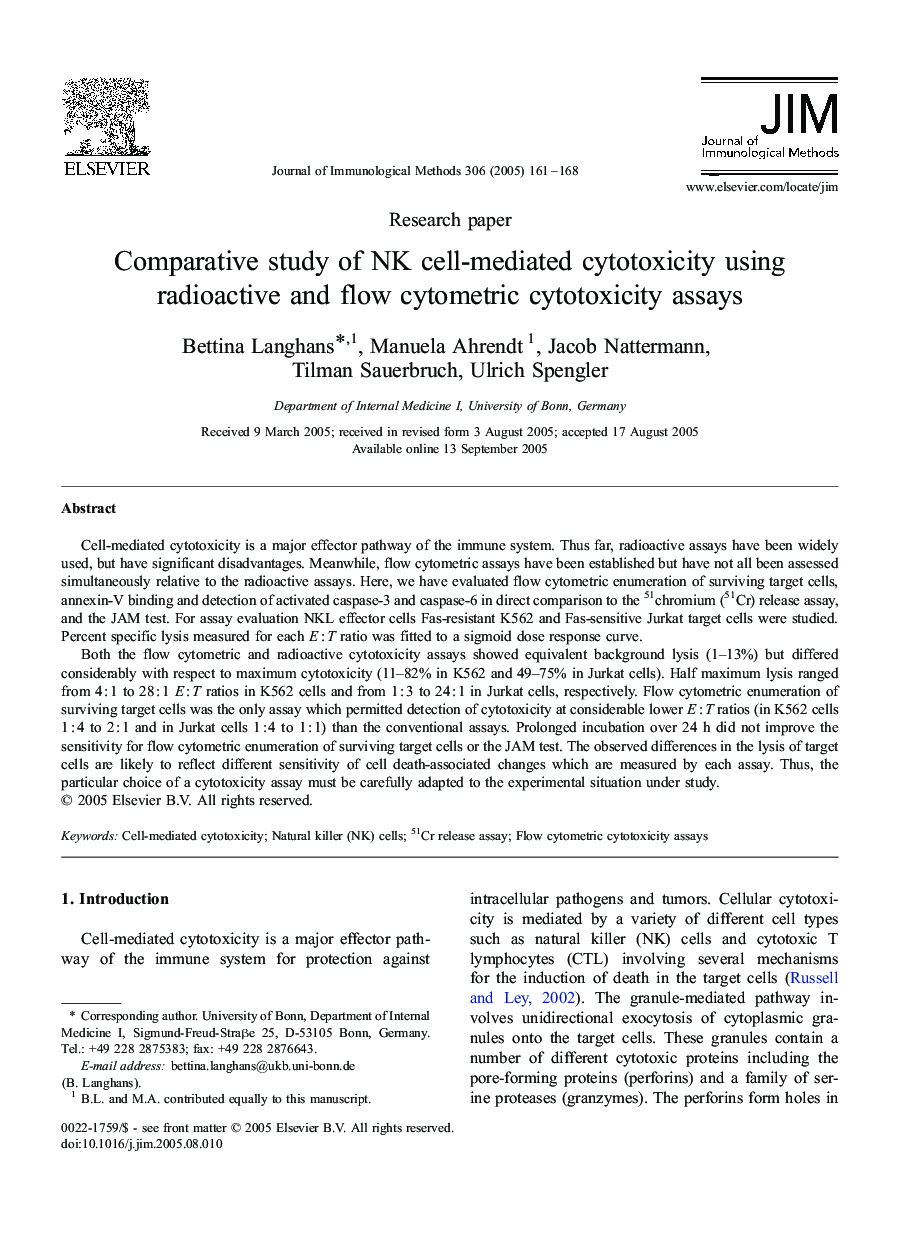| Article ID | Journal | Published Year | Pages | File Type |
|---|---|---|---|---|
| 9902217 | Journal of Immunological Methods | 2005 | 8 Pages |
Abstract
Both the flow cytometric and radioactive cytotoxicity assays showed equivalent background lysis (1-13%) but differed considerably with respect to maximum cytotoxicity (11-82% in K562 and 49-75% in Jurkat cells). Half maximum lysis ranged from 4Â :Â 1 to 28Â :Â 1 EÂ :Â T ratios in K562 cells and from 1Â :Â 3 to 24Â :Â 1 in Jurkat cells, respectively. Flow cytometric enumeration of surviving target cells was the only assay which permitted detection of cytotoxicity at considerable lower EÂ :Â T ratios (in K562 cells 1Â :Â 4 to 2Â :Â 1 and in Jurkat cells 1Â :Â 4 to 1Â :Â 1) than the conventional assays. Prolonged incubation over 24 h did not improve the sensitivity for flow cytometric enumeration of surviving target cells or the JAM test. The observed differences in the lysis of target cells are likely to reflect different sensitivity of cell death-associated changes which are measured by each assay. Thus, the particular choice of a cytotoxicity assay must be carefully adapted to the experimental situation under study.
Related Topics
Life Sciences
Biochemistry, Genetics and Molecular Biology
Biotechnology
Authors
Bettina Langhans, Manuela Ahrendt, Jacob Nattermann, Tilman Sauerbruch, Ulrich Spengler,
